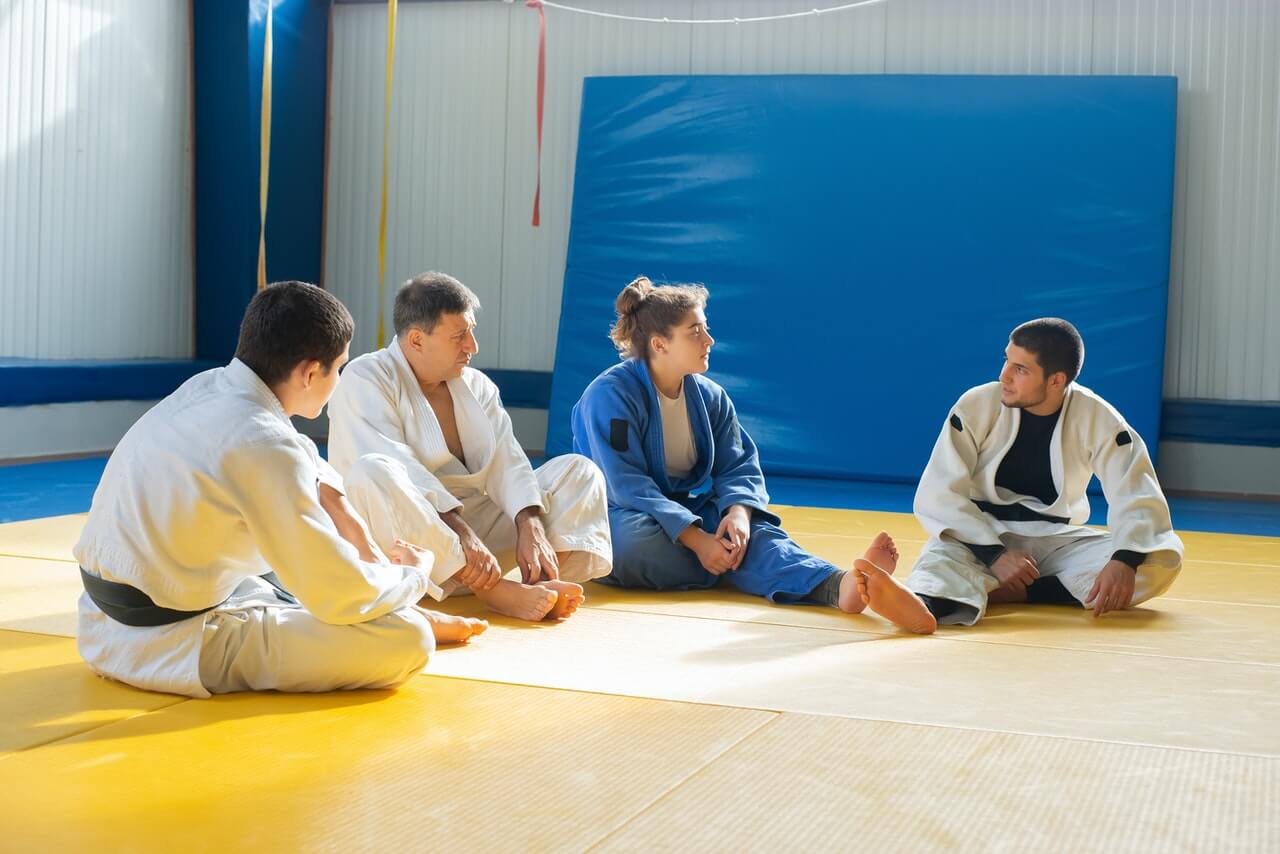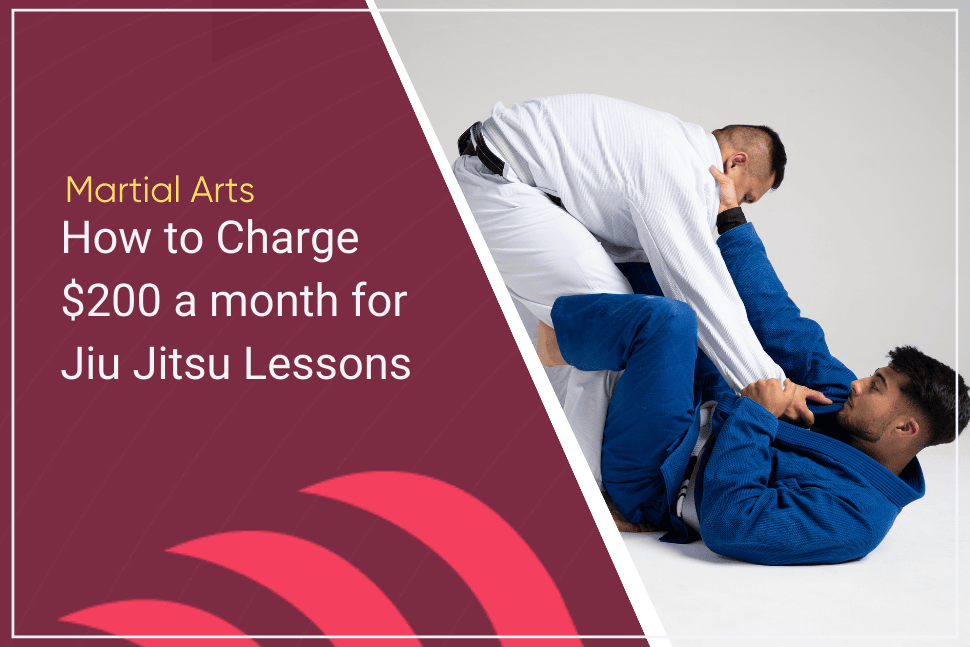How to Start a Martial Arts School

You lie awake at night dreaming of the martial arts school you always wanted...
Your students perform techniques in neat lines. You teach and observe, correct and coach. You get to train with whomever you want whenever you want.
Owning a martial arts school is the dream for many of us, but it is tricky to get up and running. In fact, most martial arts schools -- like most small businesses -- fail within the first couple years of operation.
You know a lot about your own style but maybe not much about business...which is perilous. To help you navigate this safely and with minimal stress, I’ve put together a 5-step process for you to follow:
- Secure a Martial Arts School Location
- Create Your Service Offering
- Create a Business Structure
- Purchase Liability Insurance
- Start Marketing
This process can be followed two separate ways: with startup funds or without startup funds. Each requires a slightly different strategy, and we’ll explore how to follow the steps from each way as well as the advantages and disadvantages each presents. Let's dive into how to start a martial arts school.
Secure a Martial Arts School Location
Finding a perfect martial arts school location begins with researching a good city in which to start up your martial arts school. Typically, you want to settle in an area where families make a median household income that can support recreational activities like your martial arts business.
I’ve heard of schools thriving in lower income areas, but this requires greater business and marketing skill to accomplish. With that in mind, it’s probably best to look for communities with a median income of $60,000 a year or more, especially with the way the economy has been headed.
A word of advice: don’t buy the industry hype around big schools. If you run a large facility, your rent will be astronomically high in addition to higher maintenance, utilities, and employee costs.
What many new school owners don’t realize is that you can run a much more profitable martial arts school with a smaller, lower rent space if you charge enough for your services. Because you’re charging for the quality of your service, not the facilities, you can charge the same rates for a small martial arts school as a large one.
If you don’t expect to maximize your class times at a full time martial arts location, consider working out a subletting agreement with a community center or other type of fitness businesses with extra space and time.
Be resourceful, creative, and exhaustive in your search. The great thing about these options is that the overhead will be much lower, which means your profit margins will be higher.
Securing a Martial Arts School Location with Low Funds
Securing a location with low or no startup funds is a lot trickier. Because you're not using money from savings, investment, or a business loan, you have to generate money before you can create a legitimate martial arts business. Which includes your essential equipment, like mats and targets.
To get around this, tap your personal network to offer them lessons in exchange for some modest feed. It can be risky to teach martial arts without a registered business entity or liability insurance to protect you and your personal assets (car, house, etc.).
On the other hand, you're unlikely to be sued…but the risk still exists, and it does happen. That's why I recommend you leverage your personal network first: people who know, like, and trust you. Charge them just enough to save up for what you need, and then get yourself protected as fast as possible.
This significantly lowers your risk -- but if possible, I must recommend you use liability insurance (more on this later in the article).
If you decide to go the private lesson route, a service like CoachUp lets you get up and running for practically nothing and provides you with complimentary liability insurance (and a payment processor!). You might potentially run your seminars or workshops through it, too.
Once you have enough money to cover rent and buy some essential equipment, look for one of the subletting options covered in the previous section so you can operate out of a consistent location. This step is important because, in addition to making your life easier, it makes you look professional and will help you grow.
Once you’ve got a part time location, continue to grow it until you have enough students and income to bridge yourself into a full-time commercial location.
How to Structure Your Martial Arts Programs for Value
Whatever tuition price you have in mind is probably too low. I’m sure you have all the doubts: people won’t want to pay for it, my equipment isn’t nice enough, I don’t have a full-time space...
None of those things matter. You’re charging for the quality of service you provide, your expertise and training program, not for the environment that your students train. If you’ve spent years honing your skills, you deserve to be paid fairly for teaching them, so you should charge what you’re worth.
It’s also the case that high value clients -- the type that buy more, spend more, are more loyal, and spend more money on you overall -- are more likely to be turned off by rates that are too low. Setting your rates high will help to communicate value before you’ve even begun to describe the program.
For example, in today’s economy, you really should not be charging less than $120 a month for lessons, and you definitely should consider charging more.
With that out of the way, you should put some thought into how you structure your program by asking yourself these questions:
- What’s the martial arts curriculum?
- What are the levels of progression?
- When are testings, what are they like, or are they no tests at all?
- If there are testings, are there separate testing fees for each?
- When do students start sparring, if ever?
- Are there different tiers to membership? What are each membership tiers entitled to in terms of service and product?
- Do you offer supplemental service such as personal training, private lessons, nutritional advice, or other support services?
- What equipment will members need to buy, and when?
Have all of this figured out before you start signing up members so you know exactly the boundaries of each service offering and can answer all questions. But perhaps more importantly, knowing exactly what you offer for each program helps you to keep you from being taken advantage of by your members.
If you would like to know how to price your class, read our article on pricing martial arts programs for the lifestyle you want as a business owner.
Create a Business Structure for the Martial Arts School
While lawsuits aren’t common, they still happen. Most martial arts have a contact element; and even if they don’t the performative elements, such as forms or jumping kicks, still pose a risk of injury.
It’s mandatory that you have a liability waiver for each participant to sign. However, this liability waiver does not protect you the way many martial arts instructors assume. In the next section, we’ll discuss liability insurance, but in this section, we’ll discuss liability insurance; but in this section, we’ll talk about protecting yourself with a legal structure.
Corporations used to be the most popular type of business structure, but they’re built for business that typically are larger and more complicated martial arts schools tend to be. For this reason, it’s probably best not to incorporate.
Instead, organize as a Limited Liability Company (LLC) instead. As long as you keep your business operations and your personal life separate, the LLC offers you legal protection in the case of a lawsuit. But because it’s a simpler business structure, you don’t have to keep track of minutes for your business meetings nor file the more complicated tax documents sometimes necessary for corporations.
This is not legal advice. If you can’t shell out the $150-300 for an LLC, you can always just register a “Doing Business As”, known most often as a DBA, document with your county or state (this is necessary to operate under any sort of brand name other than your legal name).
Be sure to talk with a business lawyer for the best course of action to take in your state.
Purchase Liability Insurance
Liability insurance for martial arts might be available to you at a reasonable price through your house and/or care insurer. But there are companies that specialize in martial arts and combat sports liability insurance that are often able to offer insurance premium rates as low as $500 for several dozen students for the whole year.
Insurance is going to be hovering at $500 if you buy a policy through a traditional insurer, so if you have startup funding, make sure this is factored into your financials. One of the perks of getting insured this way is the ease of coverage for new members and overall savings on insurance spend.
If you can’t just shell out $500 at once, don’t worry. You have options.
Buying Martial Arts Insurance on Low Funds
In the long run, buying a single liability insurance policy is less money overall.
But here's the problem: since we're bootstrapping this martial arts program from the ground up, we can't afford to shell out $500 or more for a standard policy before we have regular cash flow from students.
And most community centers, recreational centers, gyms, and churches that might host your program won't allow you to teach in their facilities without your own liability insurance policy.
(However, some organizations will let you operate under their coverage. This is a big break and simplifies your bootstrapping process, but don’t count on it.)
So what's the solution? Organizations like the Amateur Athletic Union (AAU) and the United States Judo Association (USJA) provide liability insurance to you on a yearly, per-student basis.
Between them, they cover
- Karate
- Taekwondo
- Kung Fu
- Judo
- Jujutsu/Jiu-jitsu.
But you can find other organizations and governing bodies that offer similar insurance offerings to members. This saves a lot of money and stress for you in the short term. (And it's not the worst deal in the long term, either.)
Just fill out a sheet or online form with information about the student, attach the yearly fee, and voila! Coverage. It’s a bit more involved than buying a premium outright, but the work involved is honestly minimal.
Also, insurance for the year rarely costs more than $20-25 a person, so if you were to operate without an LLC for the purpose of generating startup funds, requiring an extra $20 to give you some peace of mind is worth it.
Martial Arts Program Management
Running your club out of spreadsheets, hard copy waivers, and disparate software solutions will drive you crazy and it will burn you out eventually. It takes time away from your ability to market your business successfully as well as think about how to improve your programs from an instructional standpoint.
You’re in this business to teach people martial arts, not be bogged down in mundane business operations. While you can’t automate every aspect of your business, the right gym management software can simplify most things as well as connect operations in ways that save you time and hassle.
But not all gym management systems are created equal. In fact, perhaps most of the biggest players in this space have very outdated, complicated, and difficult to use solutions. While it may appear to make your life easier in the beginning, they can create more hassle than they’re worth in the long term.
That’s why we created our martial arts management software to be extremely user friendly and easy to use for martial arts school owners. In the last 6 years we onboarded hundreds of gyms and martial arts schools, taking notes of the struggles and frustrations and used that feedback to continuously improve our product.
If you need a solution to manage your members, payments, attendance, marketing and much more – check it out.
Start Marketing
I know you don't want to do this, but you must.
Martial arts marketing is the key to getting your school established and gaining momentum. Schools that have been around for awhile can often survive on referrals, but as a brand new owner, you can't rely purely on word of mouth. You simply don't have enough students to get the message out in a timely manner.
At the bare minimum, I suggest you engage in these marketing activities:
- Publish an informative, conversion-oriented, SEO-optimized martial arts website.
- Set up email and SMS autoresponders for leads who sign up through your website (more on this below).
- Distribute flyers or doorhangers in your service area that include a strong offer and call-to-action.
- Have a consistent presence at local community events.
Running marketing campaigns is much easier (and more useful) when you can run it all through software. It saves you a ton of time. If you can combine all those tools into one solution, it saves you a lot of money and headache, too.
Gymdesk has everything you need built right into it. In fact, our email and SMS messaging system is best-in-class for martial arts management software. Automate lead generation and send out messages automatically based on triggers and rules.
A Friendly Word of Advice on Opening a Martial Arts School...
There’s two things you need to understand about this new business venture of yours
- Don’t quit your day job yet, even if you have funding for the business
- You need to put all the money you make from the business back into marketing it in the beginning
Your business could take months to become solvent. And once it’s no longer losing money, it could still take time to be profitable enough to pay you a living salary.
And if you take a salary too early, you’ll be robbing yourself of the growth you could be creating by reinvesting all those business earnings back into growing the business.
These are amateur mistakes. Don’t make them -- your success depends on it.
Conclusion
Starting a martial arts school doesn’t have to be as daunting as it looks on the surface. With a little know-how, you can avoid costly and legally dangerous pitfalls by following these five steps:
- Secure a Location
- Create Your Service Offering
- Create a Business Structure
- Purchase Liability Insurance
- Start Marketing
If you have funding, these steps will be a breeze. But even if you’re starting with virtually no cash, you can still follow all these steps with a little creativity.
Gym management software that frees up your time and helps you grow.
Simplified billing, enrollment, student management, and marketing features that help you grow your gym or martial arts school.





